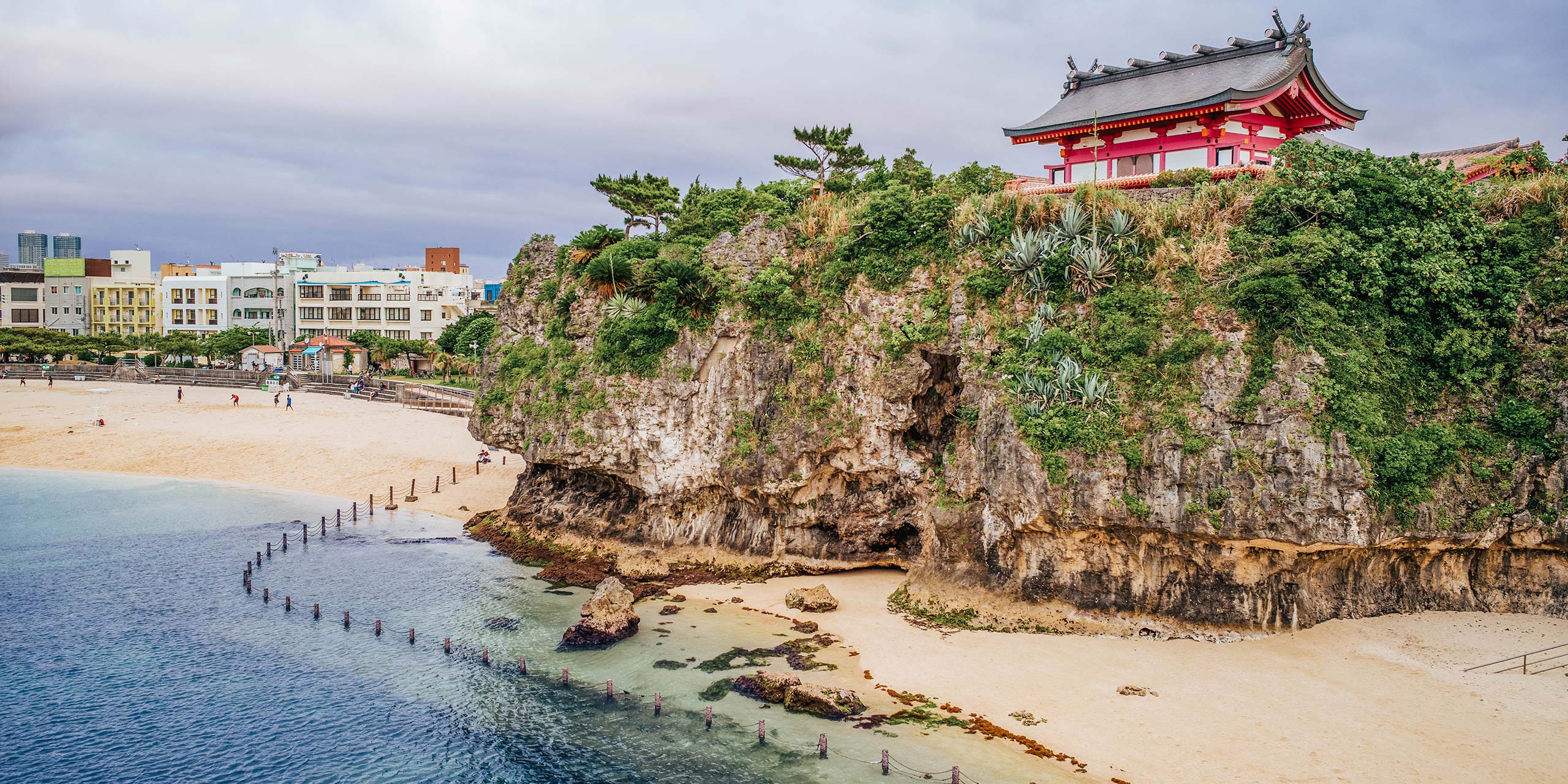
Okinawa always existed as a memory. Though it was a literal world away, it still held a vivid picture of a past I never lived. It was something so real I could reach out and touch the pampas grass, feel the white sand under my feet, and taste the salt breeze blowing in over the Zamami cliffs.
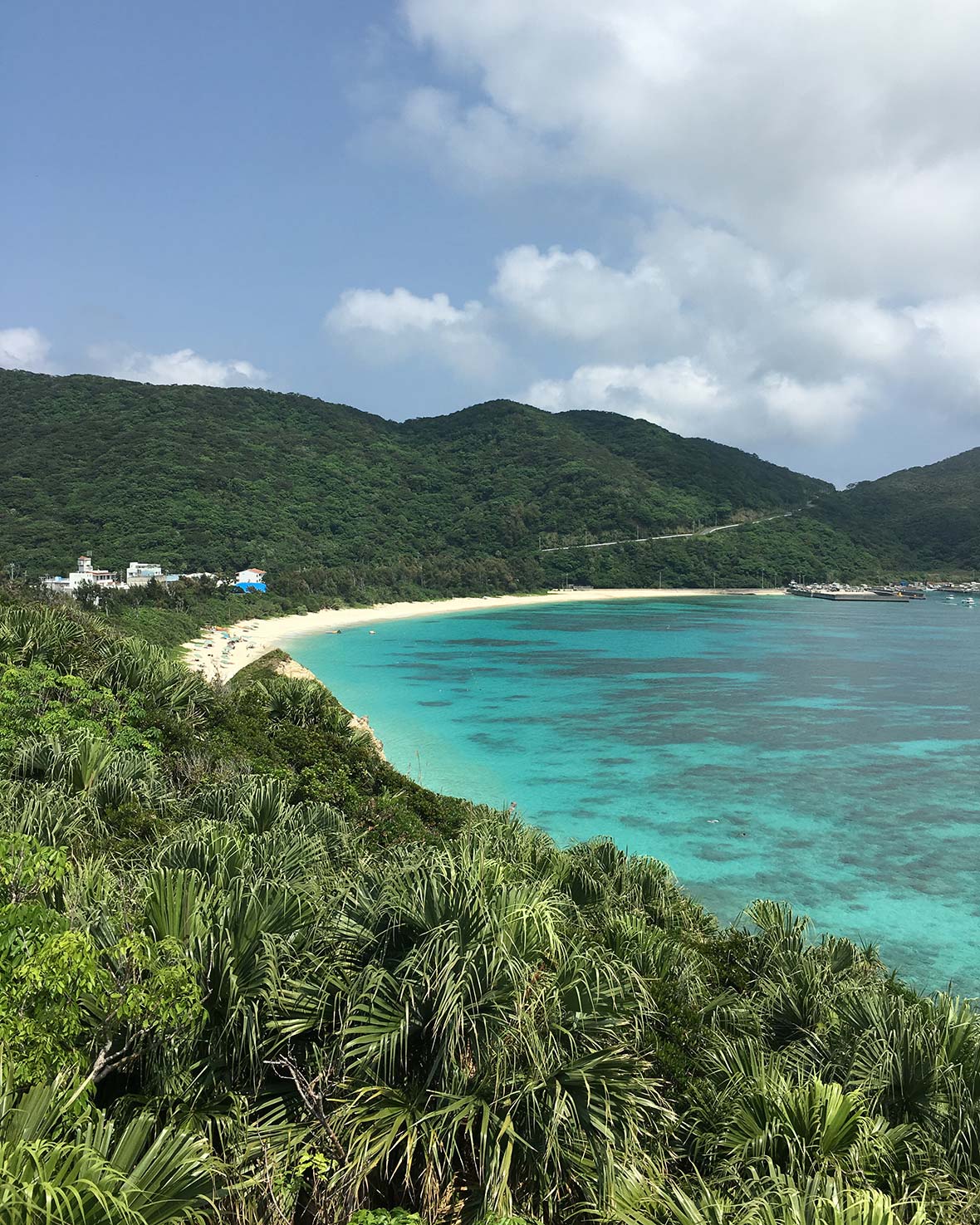
Growing up among the cornfields and country roads of rural Indiana, my siblings and I spent our summers with our grandparents. On those warm, lazy days, I bonded with my grandfather, a man with a penchant for high-and-tight haircuts, clean language, and respect for authority—the polar opposite of the shaggy-haired, anti-war youth I later became—and gradually learned about his service.
We spent hours tossing around baseballs and playing cribbage. Some days, between games of pitch-and-catch in the backyard and Battleship inside their small house, his rigid façade would crack like a stage actor at the end of a show, and he would tell me stories about the horrors of war.
My grandfather fought in World War II, in the Battle of Okinawa. After the bombing of Pearl Harbor, he jumped at the chance to join the war. In the aftermath of the largest attack on American soil at the time, young men like him lined up to serve in a show of patriotism that wouldn’t be seen again until 2001.
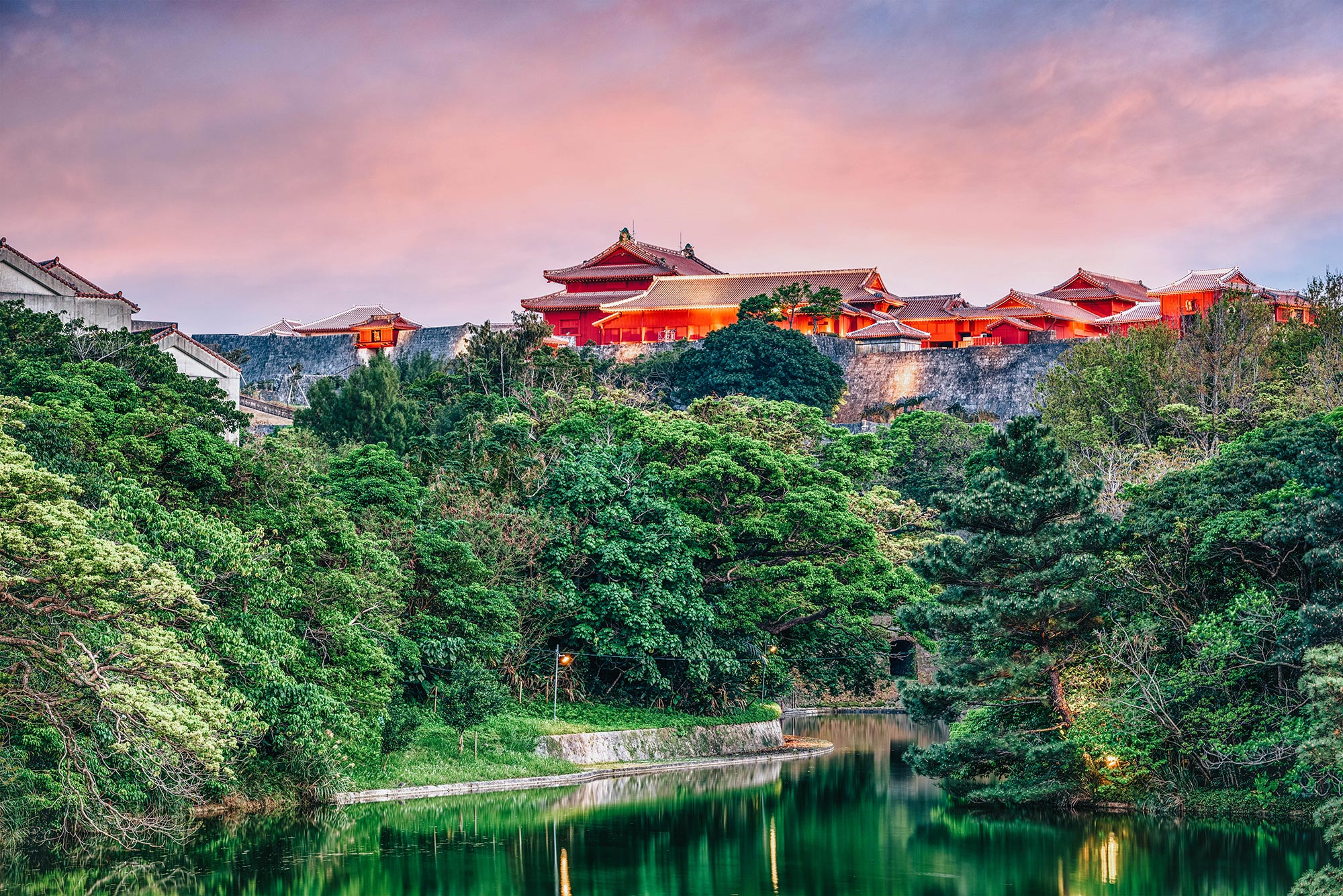
I clearly remember one of his stories from the battle. He told me the ship he was stationed on was pinched between two others in the thick of the fight. As the bombs and gunfire rained down, those two ships sank, but his one defied the odds and remained afloat. Though he didn’t say it, he impressed upon me that he was lucky to be alive—we were lucky to ever meet.
I have no clue if any of this is true, however. My grandfather died 22 years ago. As far as I can tell, he never talked in detail about his time in the war with others in my family, and service records from the war are spotty. (A fire at the National Personnel Records Center in 1973 destroyed tens of millions of Army and Air Force service records, as well as an unknown number of Navy and Marine Corps records.)
But even as I grew older and my memories of him faded, his stories stayed with me as I remembered them, framing a picture of Okinawa that became sharper and narrower as time passed.
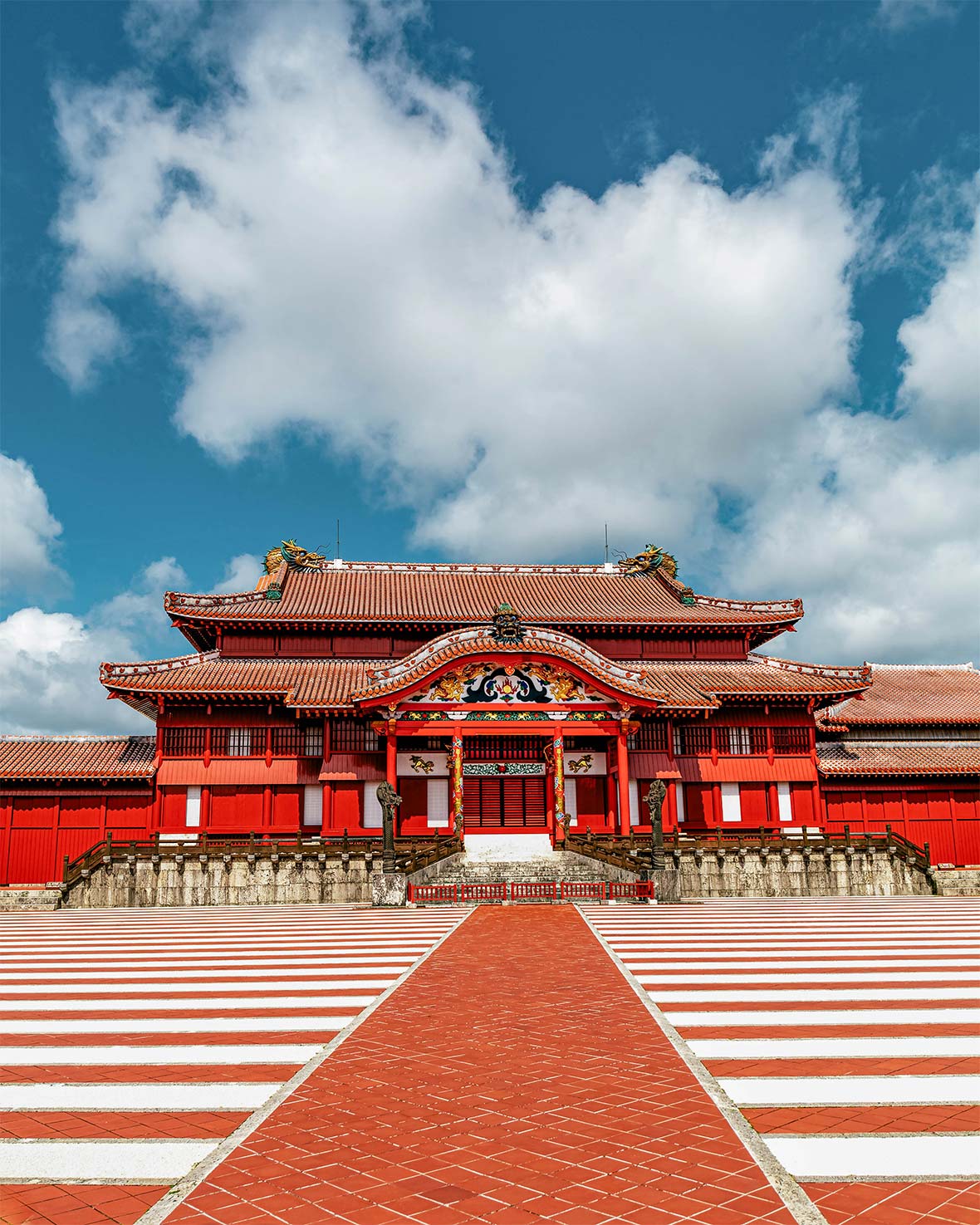
A few years ago, my wife and I finally visited Okinawa. I was curious if the picture of the island frozen in time since 1945 and passed down to me still existed. I set out to find it over a week in the prefectural capital Naha and the Kerama Islands, a chain of wind-swept escapes west of the main island itself.
We landed in Naha on a damp May morning. Immediately, we set off for Shurijo, what historians consider to be the Ryukyu Kingdom’s most important castle, walking up to it via the remnants of the 500-year-old Kinjo Stone Road. We gazed out at the gray horizon from the castle on the hill. I wondered how many times someone had stood in the same spot and watched warships sail in toward the shore.
The castle, we discovered, had been abandoned in 1879, after the Japanese empire annexed the Ryukyu Islands. During World War II, the Imperial Japanese Army had set up its headquarters underneath it, and so American forces shelled it relentlessly. They set fire to it and left it in ruins.
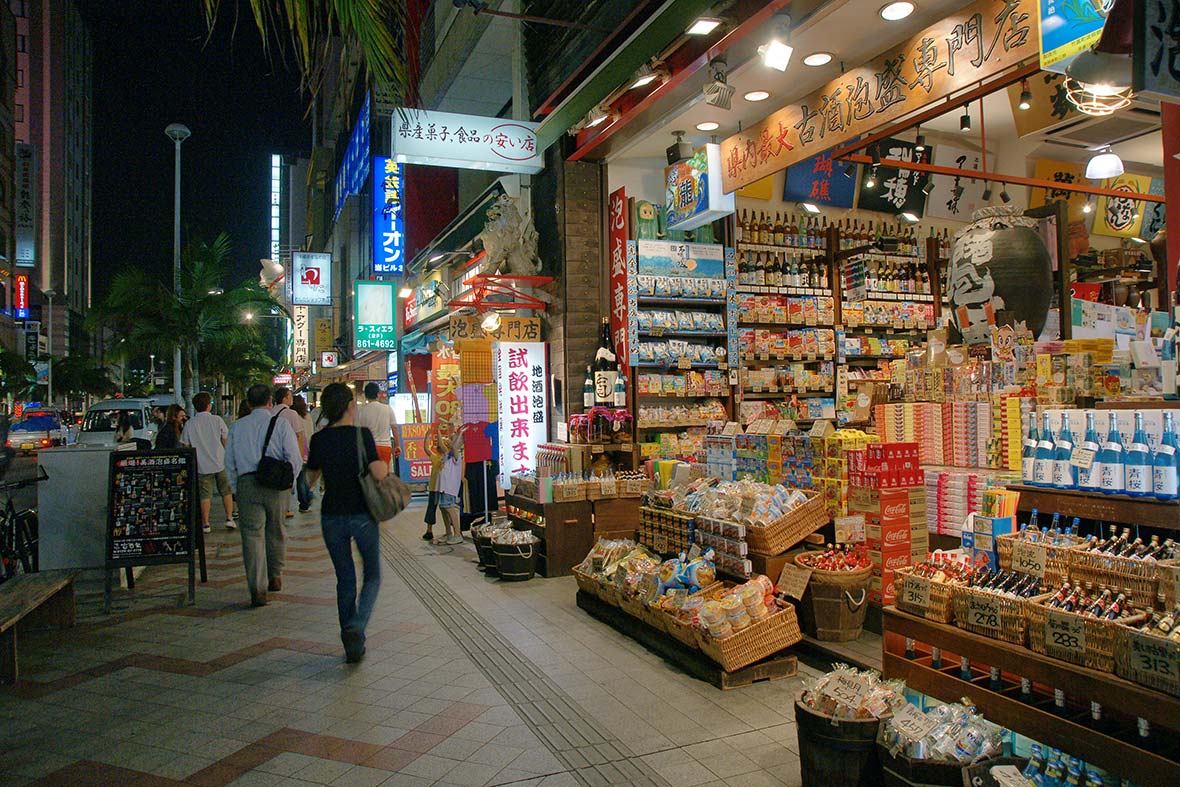
The castle was nearly destroyed several times, but today it still proudly overlooks Naha.
When we left the castle, we wandered to nearby Zuisen. Operating in the shadows of Shurijo since 1887, the stone-walled distillery still produces traditional awamori – the fiery rice-based spirit that has become a symbol of Okinawan culture. Here, a woman served us a sampler of five (all went down with the potency of kerosene) and let us wander through the small facility on a self-guided tour.
Later in the capital, we ate island staples, like goya chanpuru (stir-fried bitter gourd with egg), rafute (sweet-salty pork belly simmered with bonito stock and awamori), ice cream, and snacks made from beni-imo (purple sweet potato), and, a byproduct of the postwar American military occupation, spam musubi, and taco rice.
All along the Kokusai Dori—“International Road,” Naha’s main tourist and shopping street, named after the former Ernie Pyle International Theater that was built here after the war—people ate, drank, partied, and bought souvenirs like shisa (Okinawa’s lion-dog figure) ornaments and aloha shirts. Modern Japan meets island life.
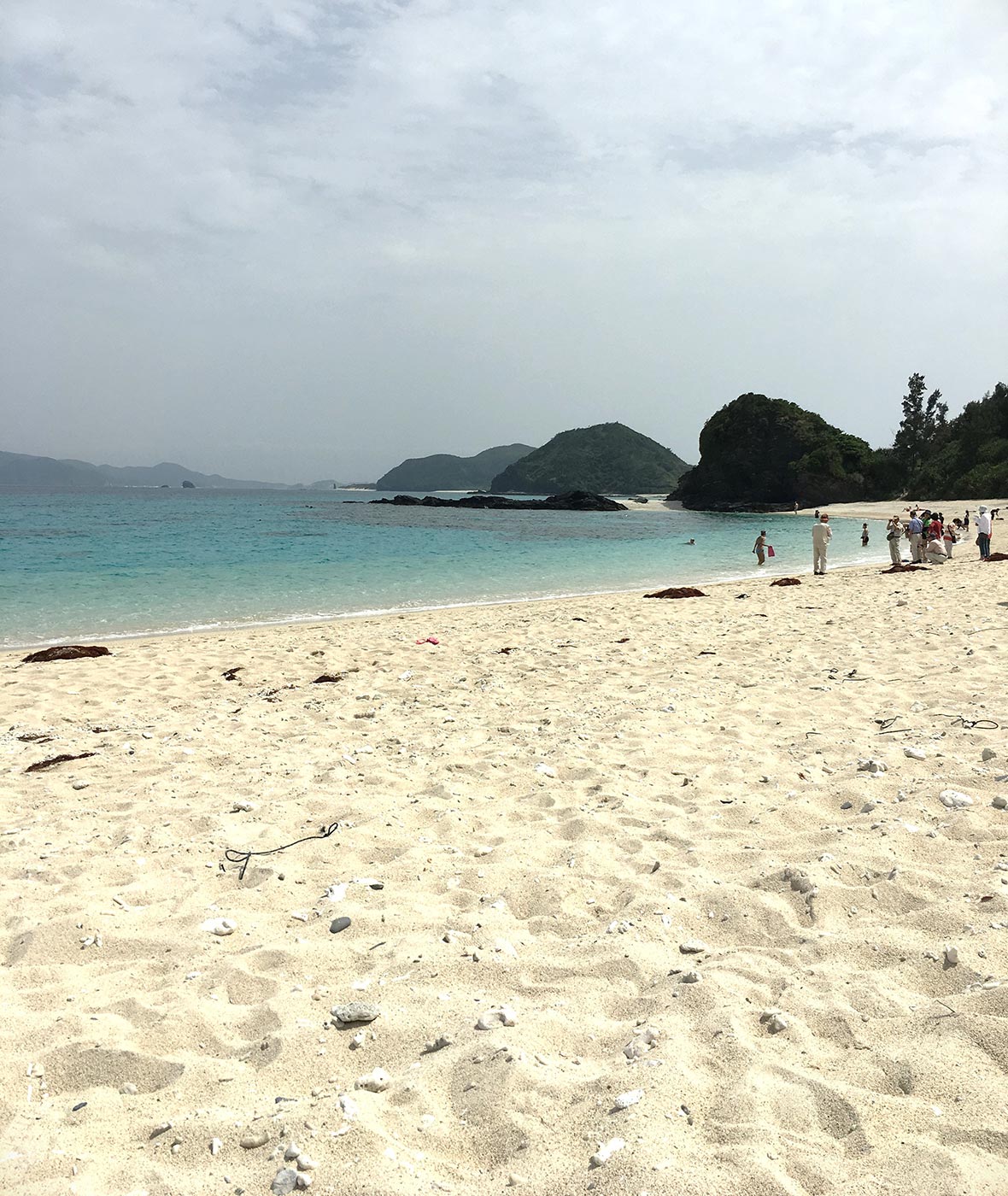
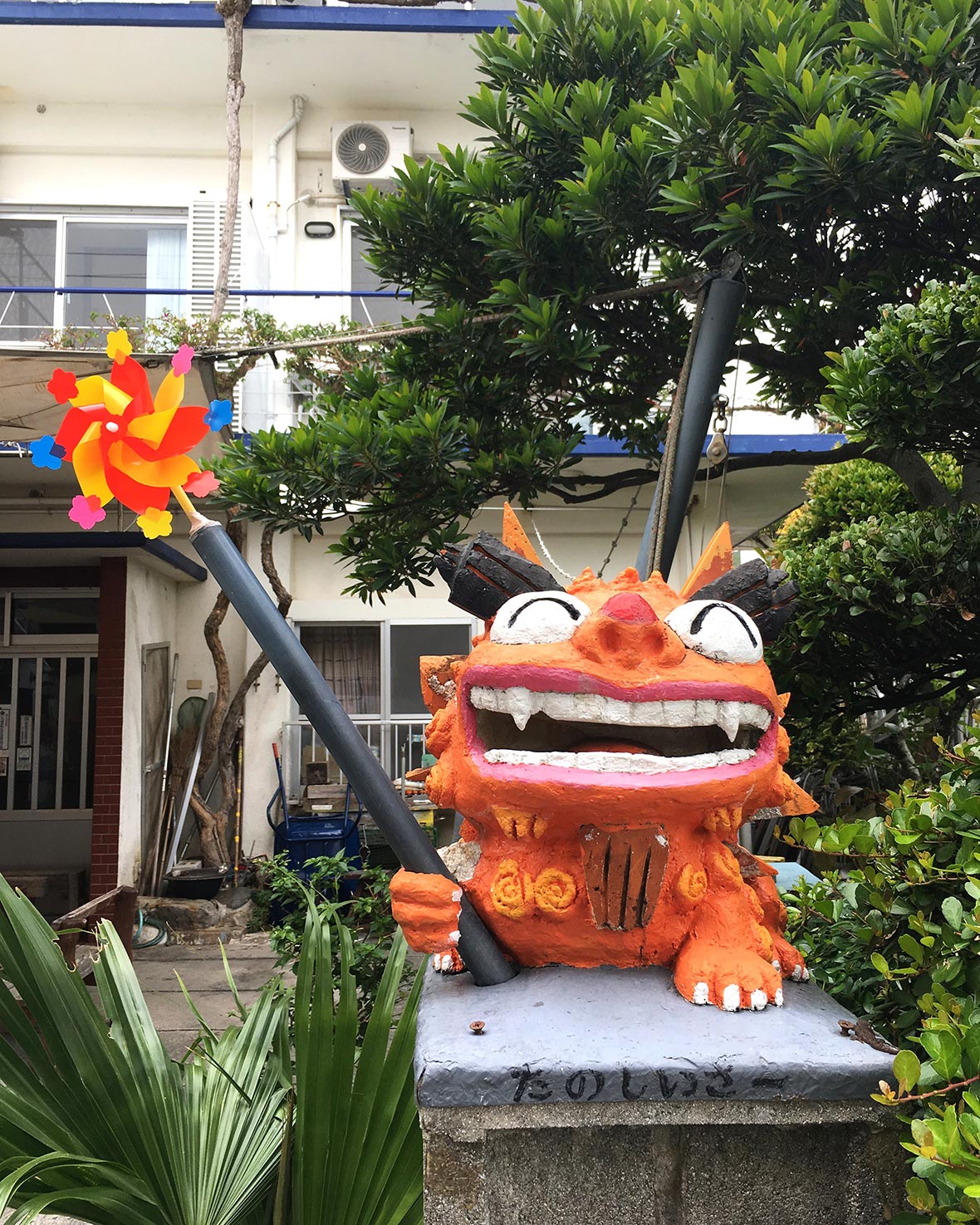
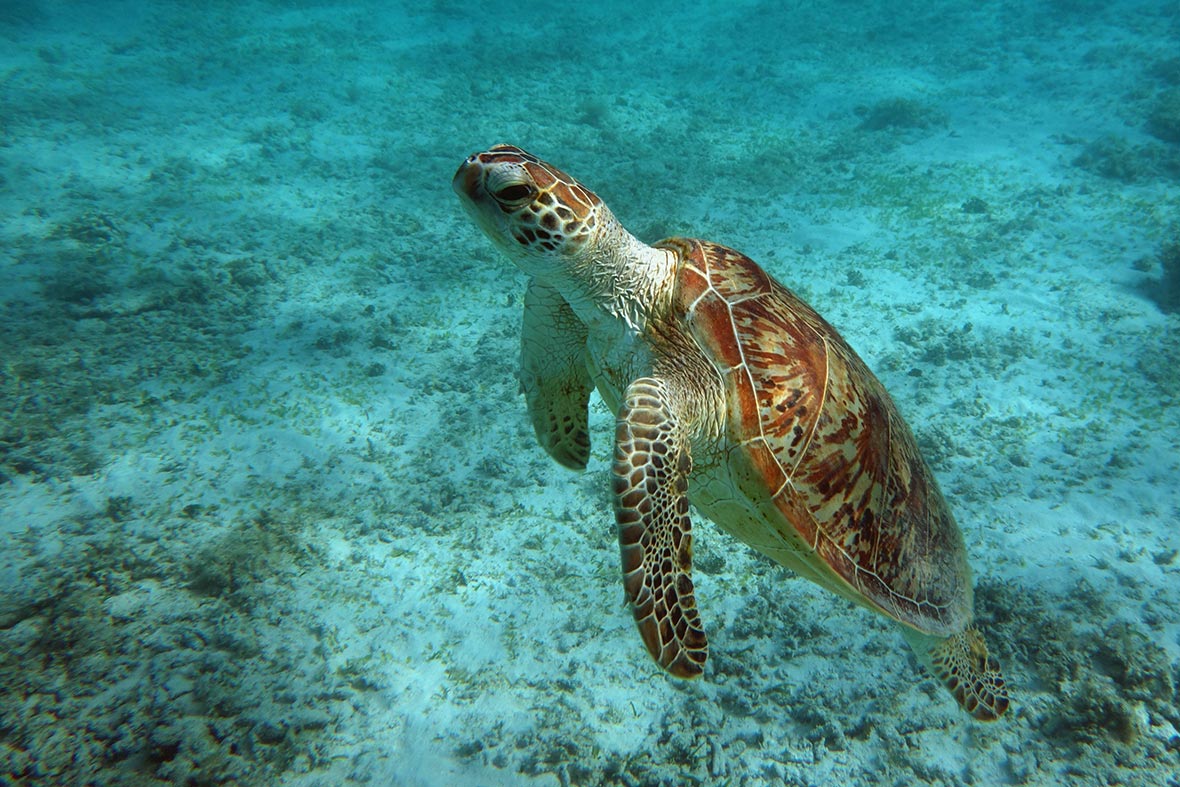
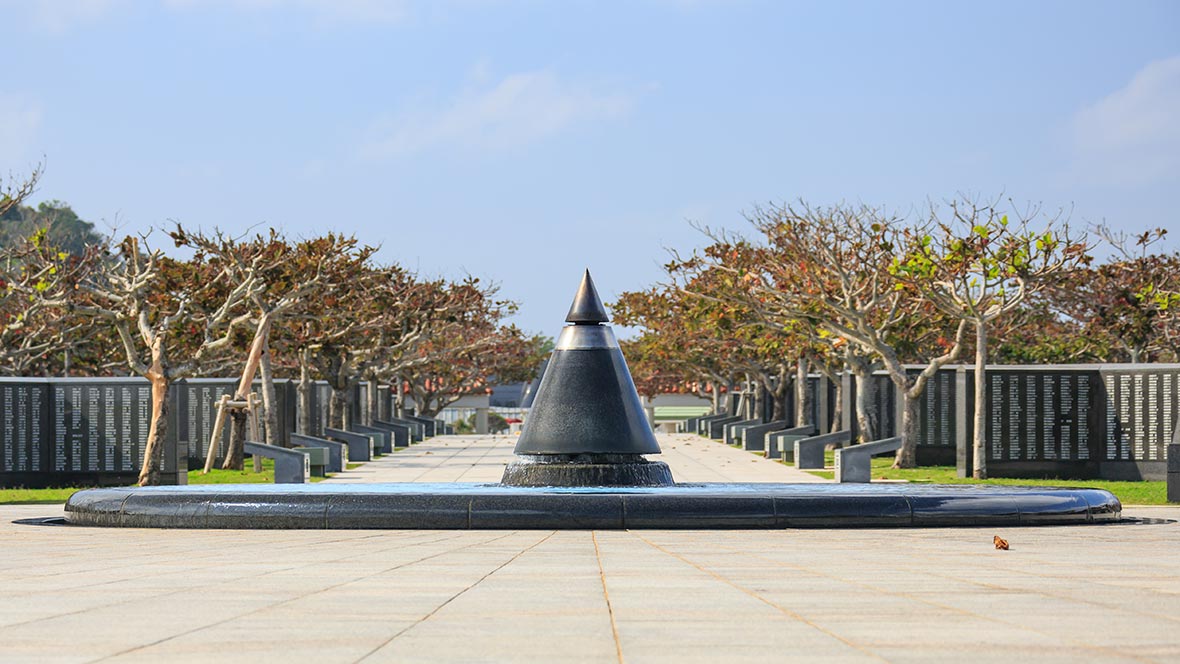
We spent the next few days basking in the late spring warmth on the Kerama Islands. On the ferry to Zamami, a steep-rising speck of land ringed by coral and blindingly white sand, locals stood on the deck, watching a humpback whale slap its tail against the water before disappearing into the chilly depths.
The island is popular with whale watchers from December to early May. In the summer, beaches like the stunning, half-crescent Furuzamami attract holidaymakers from across Asia and divers looking to swim with sea turtles. Today, it’s a slow, sleepy place with a population of just under 1,000 people.
In 1945, however, it was an important war theater – a prelude to three months of attacks on Okinawa.
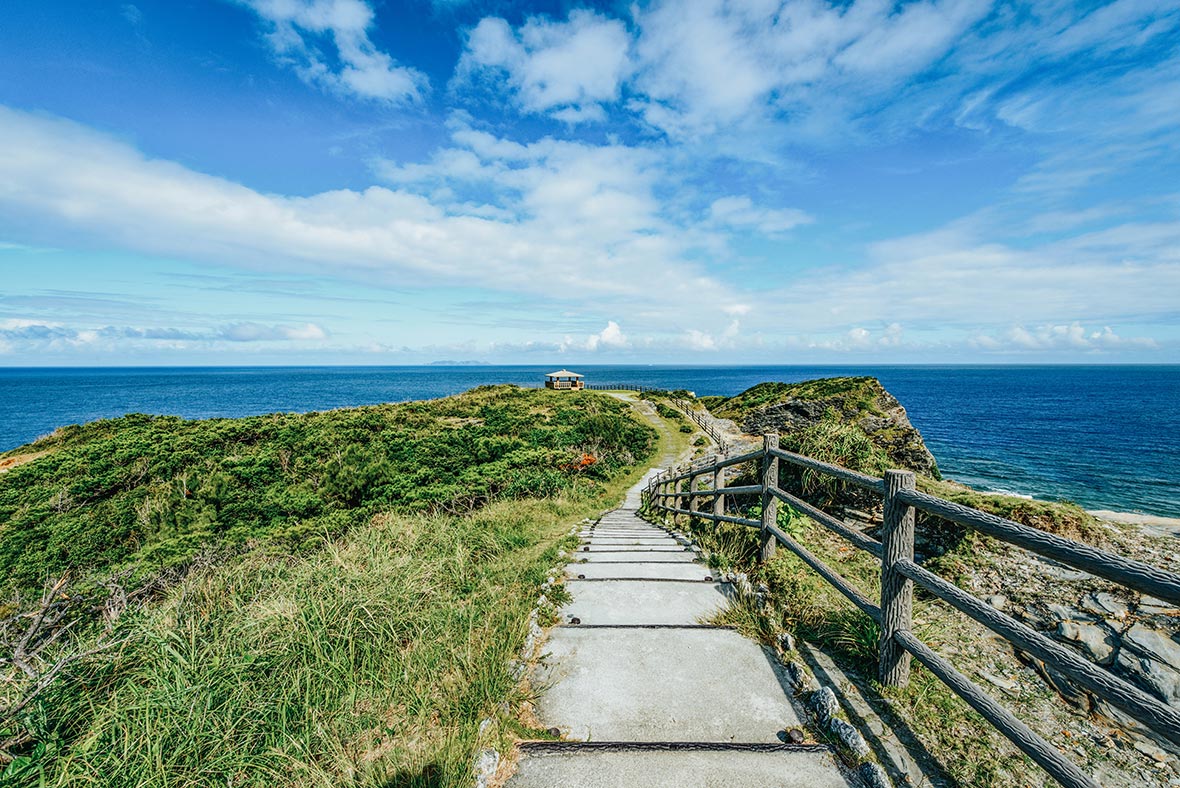
The invasion of the Kerama Islands marked the beginning of the Battle of Okinawa. On March 26, 1945, Allied forces reached Zamami, meeting stiffer resistance than they anticipated. The three-day battle that ensued left hundreds dead, including 404 civilians, about half of whom committed suicide to avoid capture.
This history isn’t abundantly clear to visitors, but it lives on among locals. A small monument by the pier reminds you that Allied soldiers landed here first, and up the sloping hills toward the island’s wooded interior there’s a larger peace shrine. Every year, on March 26, villagers visit this memorial site to pay respects to the dead. The children who live on the island also learn about the ravages of war in school.
One afternoon, I went for a run around the island. The road was devoid of traffic of any kind. The low afternoon sun colored the sea silver as the tall grass waved in the breeze. A postcard couldn’t have done the scenery justice. I stopped at the Unaji-no-sachi observation deck to look out at the surrounding islands and wondered if my grandfather had been here, if we had stepped foot on the same distant soil.
